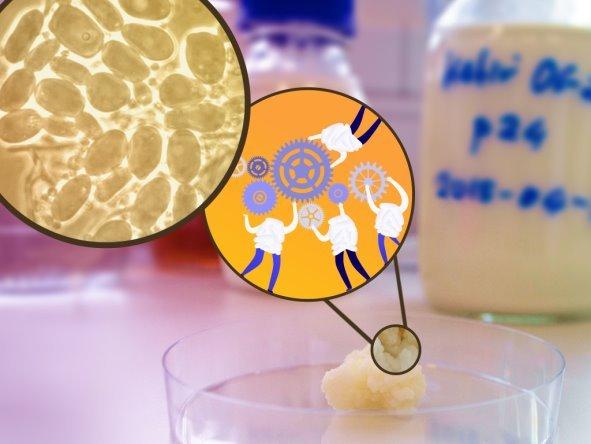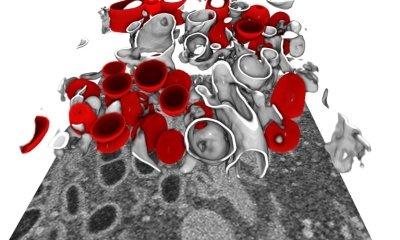-
In kefir, microbial teamwork makes the dream work
Kefir is one of the world’s oldest fermented food products and considered to be a ‘superfood’ with many purported health benefits New research shows how cooperation among bacterial species allows kefir to thrive as a community The dominant species of Lactobacillus bacteria found in kefir grains cannot survive on their own in milk. Only when the species work together, feeding on each other’s metabolites in the kefir culture, they each provide something another needs To make kefir, it takes a team. A team of microbes. That’s the message of new research from EMBL and Cambridge University’s Patil group and collaborators, published in Nature Microbiology today. Members of the group study…
-
Replication cycle of SARS-CoV-2 in 3D
Study reveals the SARS-CoV-2 replication cycle in 3D in human lung cells Understanding how SARS-CoV-2 hijacks host cell machineries will help in developing therapeutic strategies, including drugs Researchers relied on the imaging facilities at EMBL Heidelberg and state-of-the art imaging techniques Results published in Cell Host & Microbe As the global coronavirus pandemic continues, scientists are not only trying to find vaccines and drugs to combat it, but also to continuously learn more about the virus itself. “By now we can expect the coronavirus to become seasonal,” explains Ralf Bartenschlager, professor in the Department of Infectious Diseases, Molecular Virology, at Heidelberg University. “Thus, there is an urgent need to develop and implement both prophylactic and…
-
Eat more to grow more arms…if you’re a sea anemone
Your genetic code determines that you will grow two arms and two legs. The same fate is true for all mammals. Similarly, the number of fins a fish has and the number of legs and wings an insect has are embedded in their genetic code. Sea anemones, however, defy this rule and have a variable number of tentacle arms. Until now it’s been unclear what regulates the number of tentacles a sea anemone can grow. Scientists from the Ikmi group at EMBL Heidelberg, in collaboration with researchers in the Gibson lab at the Stowers Institute for Medical Research in Kansas City, have shown that the number of tentacles is defined…



